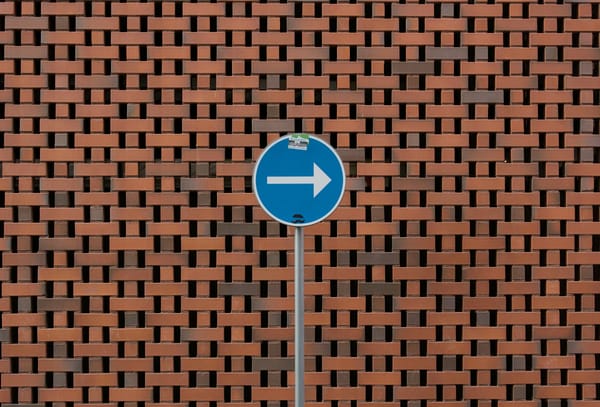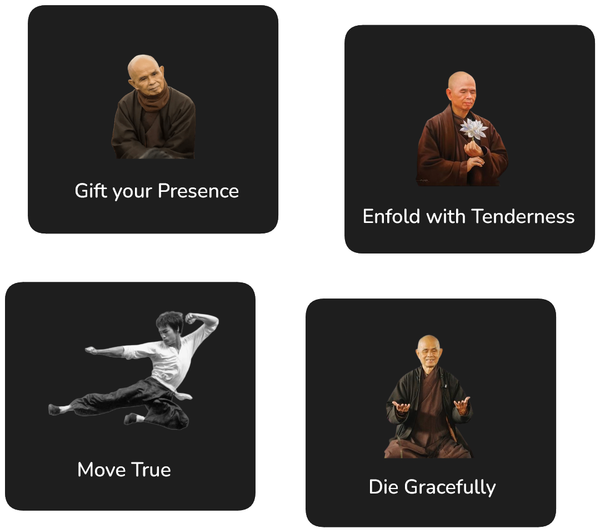Memory System Part 2: 3x3 Grid

I have outlined in part 1 of this series possible applications for an improved memory. The two applications I suggested were: (1) to be able to aid our imagination and creativity and (2) create more memorable stories. I think the second application is really only relevant for those who want to become better creators of fictional stories, whereas the first application really should be of relevance to everyone. In this article, I will introduce a simple technique I believe can be of use for the first application of improved memory; to help us keep our ideas and thoughts organized while using no other tool but our imagination.
I'm very aware that this is not the first time it has been attempted to define a mnemonic system of some form. There are literally thousands of books, articles, discussions that aim to provide memory systems. However, I often found these to focus on simiar sets of rules. They are also often focussed on helping us remember specific classes of things such as numbers, names or faces.
Hence, I believe that there is some value in proposing a technique that is specific to helping us unleash our creative thinking. However, given that there are so many resources on memory systems available, I am aware I may very well be just reinventing something that someone else has already come up with in one from or another.
With that disclaimer out of the way, let me briefly explain what I thought of as a technique for the first application of an improved memory, a technique specifically geared towards enabling abstract thinking and imagining things in a very fluid and dynamic way.
The centrepiece of the technique is a simple 3-by-3 grid that consists of nine cells. You place concepts and ideas into these cells, remembering specifically into which cell which concept or idea was placed. For instance, if I was contemplating the Nobel Eightfold Path from Buddhists' tradition, I may arrange each of the steps of the path as follows (note that the concepts from Buddhism are used here simply as an example of an application for the grid, it can applied to any other topic of study or thought as well):
| Right View | Right Thinking | Right Speech |
| Right Action | Right Livelihood | Right Diligence |
| Right Mindfulness | Right Concentration |
Nobel Eightfold Path on a memory grid
Each of the concepts placed upon the grid can be further broken down by another 3-by-3 grid. So for instance, the concept of Right Mindfulness maybe represented by another grid that contains the Four Establishments of Mindfulness as follows:
| Body | Feelings | Mind |
| Objects of Mind | ||
Four Establishments of Mindfulness on a memory grid
Note these grids should ideally not be written down, but just be composed in your mind. And while it will be good to go through these grids in your mind multiple times to establish them in your memory, they should fundamentally be seen as dynamic, so that our shifting understandings and thoughts can be represented. So if I also want to consider the concept of attention as well as the Seven Miracles of Mindfulness, I may change the grid that breaks down Right Mindfulness into the following:
| Four Establishments of Mindfulness | Attention | Miracles of Mindfulness |
Alternative breakdown for Right Mindfulness on memory grid
So to summarise the key rules for 3x3 memory grids are:
- Concepts are placed in specific locations on a 3x3 grid
- Concepts can be broken down by further 3x3 grids
- One should revisit a grid multiple times to anchor it in memory
- It is allowed and encouraged to move concepts on a grid and between grids
- You can create as many grids as you like, they can be connected (one grid the breakdown of a concept of another grid) or not
Further to these fundamental rules, there are a few suggestions that can be useful in working with these grids:
- It is often advisable to place concepts on the grid in the same order as we would be writing on a page (at least in Western languages): from left to right and top to bottom. This though is not a strict rule and sometimes it maybe better to place concepts in a semantic way (e.g. to put the most central idea in the middle, or arrange related ideas into separate rows or columns).
- It can be helpful to visualise the grid in a specific location. Here I would suggest to visualise it upright directly in front of yourself at arms length, and large enough that one would have to reach a bit to reach the corners of the grid.
- It can be beneficial to use mnemonic techniques such as using images instead of concepts and making what we place on the grid remarkable in some way. This can be of particular use for an anchor concept on the grid, for instance the one at the top left or centre position. Since remembering one of the concepts aids in remembering the rest of them. I understand such images as adornments to the original concepts to be remembered in a similar way as images are added to illuminated manuscripts.
.jpg)
Illuminated Manuscript
- It maybe useful to associate names and/or images to each cell of the grid - these would be the same in every grid and help remember where something is placed on the grid. This is a kind of adornment, just one that is applied to every grid. For instance, one may use the following terms:
| Anchor | North | High |
| West | Centre | East |
| Low | South | Ultimate |
Descriptions for cells on the grid
Or the following images:
| Sea | Ice Cap | Sky |
| Prairie | Castle | Rice Fields |
| Cave | Desert | Mountain |
Possible mnomic images for cells of the grid
Note though that adornment of any kind should be used with caution, since imaging them takes time and distracts from the core concepts we want to remember. We should use them primarily as temporary memory aids until we become more familiar with a topic or for things that we think we are likely to forget.
This grid is a simple mechanisms that we can use to help us with unleashing our creativity and imagination and give some kind of structure and shape to our thoughts; that makes it easy for us to retrieve our thoughts and ideas and expand on them as we go along. Starting with one 3-by-3 grid and placing a few things and there, breaking it down and creating new grids will over time create quite sophisticated systems that can be continually improved.
After some time we may want to extract what we have created in the grids and put it into a knowledge management tool such as Notion or just write it down on a piece of paper. But crucially we have the freedom to not have to do so right away. Once we have built up the confidence that our thoughts do not get lost if we do not record them right away in some capacity, we are empowered to think in new ways and not have our thought processes interrupted by the need to look for a piece of paper or open up our phone.
However, even with lots of practice, there will always be chance that we may forget something placed on the grids. But I think that may not be as significant as we fear, since if we have found something that is profound and that we know is important, then we are very unlikely to forget it. So what we actually forget maybe all our not so good ideas or things that are not as imporant for us to remember, and thus our memory becomes a natural filter that only leaves our very best ideas.
As I have mentioned, I think this memory grid is key for enabling the first application for improved memory; enhancing our imagination and creativity. This system is for the most part built on the classical ideas of improved memory: placing concepts into a particular place and also putting them into a particular order. This grid is just simplified, in that in places more trust into our facilities to remember things without artificial enhancements to concepts solely for the purpose of helping us remember them. It really aims to be as lightweight as possible, by presenting a few, flexible rules that do not get in the way of your thinking.
I will propose another technique aimed at the second application for improved memory in a follow up article; to help us be better communicators of ideas by making them easy to remember.
Featured Image: Gerd Altmann





